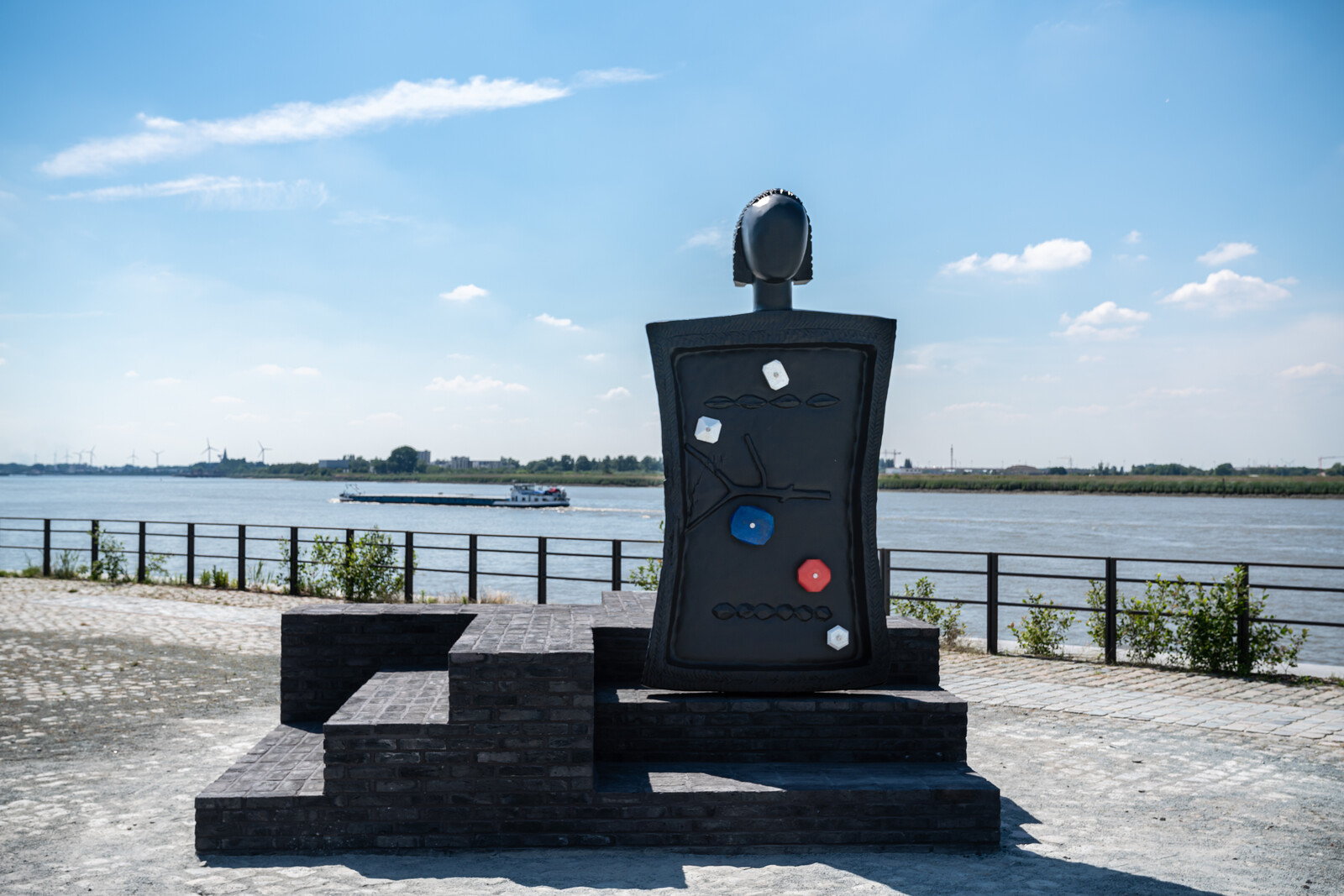Waterfront
2000 Antwerp
Belgium
The anthropomorphic lukàsà
Represents all human beings
Consisting of men and women
As well as all human varieties
This symbol that has been rightfully placed
On a large cross on the quay of the Scheldt river
In the famed city of Antwerp
Where the first Belgians left for Congo
And where the first Congolese arrived
Emphasises the wish to collectively
Build a joyous humanity
And the arrival of a new era
An era of reconciliation and resilience
Of cooperation and brotherhood
It directs our gaze to the present and the future
The agents of today
Are indeed not the same as those of yesterday
—Jean Kabuta, The Long Hand (excerpt), a kasàlà written in response to the eponymous artwork by Sammy Baloji
The Antwerp Public Art Collection (Kunst in de Stad—Middelheim Museum) is proud to present a newly commissioned artwork by visual artist Sammy Baloji. This commission marks the first permanent public artwork by Baloji, and the first work by an artist of Congolese descent in Antwerp’s public space.
Titled The Long Hand, this monumental sculpture graces the Southern quay of the river Scheldt. The artist was immediately drawn to the river, identifying it as the gateway between “here” and “there,” the city and the world, but also, more poignantly, between Belgium and Baloji’s native Congo.
The Long Hand holds many references that congeal into an artwork made of bronze, bricks and recycled plastic—three composite materials. Bronze: an alloy of tin and copper, the latter being one of the main mining and export products of the DRC. Bricks: crafted in Maaseik, Limburg, out of clay and soil from spoil tips, remnants of Belgium’s lost mining industry. Plastic: waste collected from factories and then molten into cut diamond shapes that adorn the bronze figure.
The form and title of the sculpture are derived from the Lukasa, a cultural device used in the Luba culture of Southern Congo. Lukasa (or “long hand” in Kiluba) are memory boards and a vital part of the oral tradition of historiography and storytelling of the Luba people. With The Long Hand, Sammy Baloji introduces this mnemonic device into public space, making it monumental, and as such aligning with the tradition of public art as commemorative signifiers.
Traditionally, Lukasa are made out of wood and ornately embellished with abstract carvings and inlayed with stones or shells. They are used in ceremonies where Luba history and mythology is orally transmitted by a so-called “man of memory” who holds the Lukasa in one hand, and traces the lines and encrusted jewels with the other, using them as nodes of information.
The coloured plastic diamonds are attached to the surface of the bronze sculpture in such a way that they outline the naval route between Antwerp and Muanda, the main port city of Congo. The brick platform that houses the statue is conceived of by the artist as a place to sit, convene, and exchange stories.
Another reference of note is a quotation by former Antwerp mayor Lode Craeybeckx (1897-1976), who said: “A citizen of Antwerp need only put their hand in de river Scheldt to be connected to the world.”
Curator: Samuel Saelemakers
Coordination: Estelle Lecaille, Twenty Nine studio
Project development: Ismaël Bennani & Orfée Grandhomme, Valentin Bollaert (Bureau Nord), Victor Mangindula, Maximiliaan Royakkers
Production: Art Casting, De Craecker, Bel Albatros, Helix, Wicko
The Long Hand was made possible in part with the support of the Flemish government.
About the artist
The oeuvre of Sammy Baloji (1978, Democratic Republic of the Congo, lives and works in Brussels) is a perpetual investigation into the cultural, architectural, and industrial heritage of the Katanga region, as well as an inquiry into the effects of Belgian colonization.

